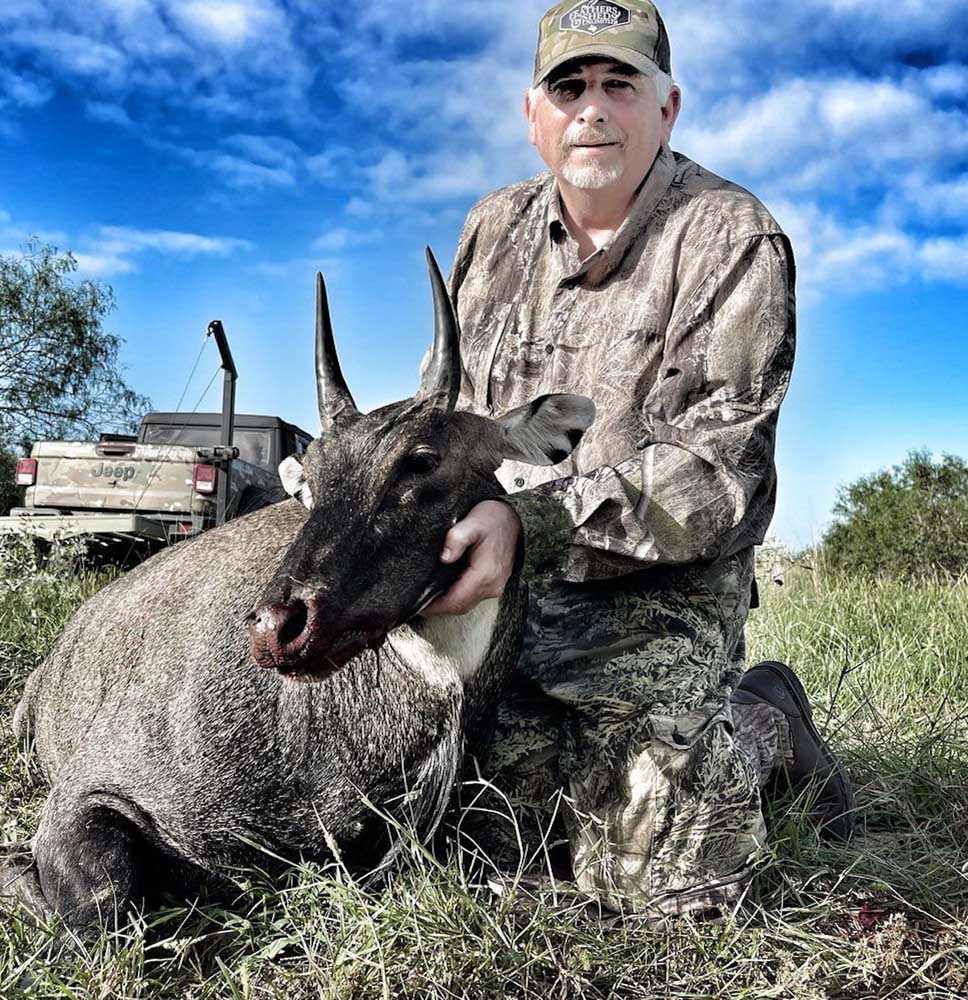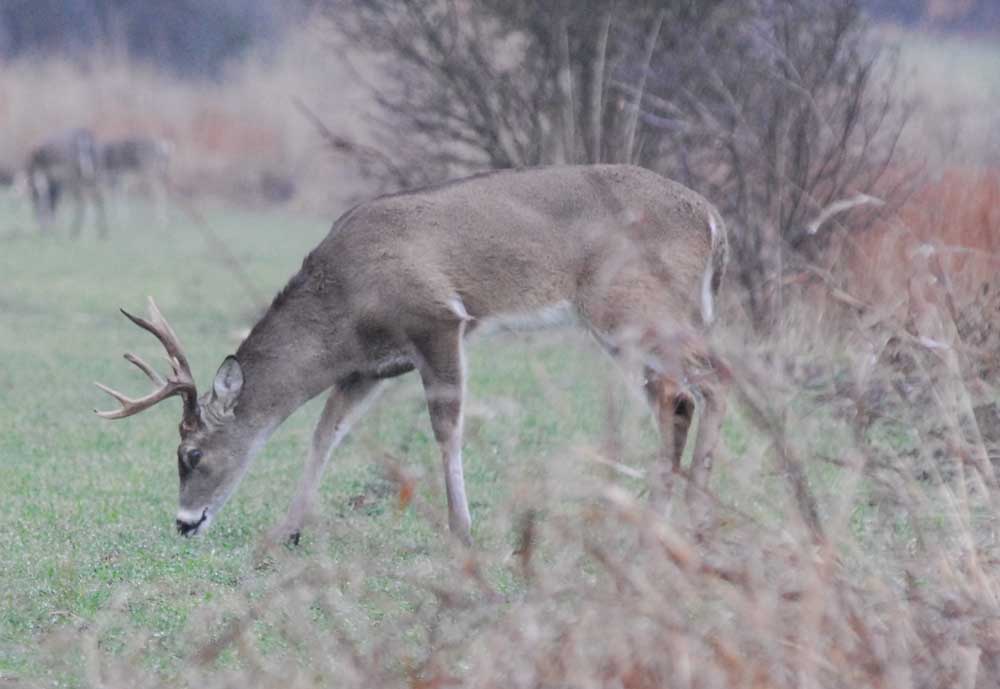Warming To The Moment: Rising temps the key to hunter’s successful nilgai hunt
Published 1:02 am Friday, November 17, 2023

- Mike Ragan, Bullard, took a trophy nilgai bull this fall hunting the Kenedy Ranch in South Texas. Nilgai were brought from India and Pakistan, and are one of the first exotics to appear in the state.
It was around 9 in the morning a day after an early October cold front had dropped the South Texas temperatures uncharacteristically low slowing movement of the warm weather-loving nilgai to a halt.
Bullard hunter Mike Ragan and his guide, Josh Hartwick of Feathers and Sheds Outdoors, had seen plenty of game, deer, turkey, pigs and nilgai cows and calves, since they had begun their drive around the 22,000-acre pasture on the Kenedy Ranch at sunrise. The bulls, on the other hand, were clearly waiting on the temperature to rise.
Found almost exclusively in South Texas, nilgai were one of Texas’ first exotic species. They were imported in the 1920s from their native India and Pakistan as zoo exhibits. The King Ranch purchased some excess zoo animals in the 1930s and with good growing conditions and early protection the animals expanded in range and numbers. A study by Texas Tech estimated there are about 15,000 of the “blue bulls,” the translation of the name, primarily in Kenedy and Willacy counties. On the Kenedy, neighboring King Ranch and several others in the area, nilgai are a free-ranging species.
While coyotes will predate on calves, adult nilgai, with bulls growing upwards of 550 pounds, really have no predators in Texas. However, there can be die-off’s during periods of extremely cold, wet weather. Even slightly cooler, damp weather can impact the antelope’s movement.
Ragan’s hunt was supposed to have started at noon the previous day, but Hartwick sensed it would be a slow start and suggested waiting until later when the sun came out.
“A tropical low had come in and it was cold with a drizzly rain. Josh said they hate cold, rainy weather because they don’t see that where they come from. They lock down,” Ragan explained.
Hunting spot-and-stalk from a Jeep, the first afternoon’s hunt started with them seeing mostly cows and young bulls.
“We did see a mature bull that was about a mile away and another that spotted us before we did him that took off running and ran out of sight before we could attempt a stalk,” Ragan said.
They closed out the day sitting on a pipeline glassing. They had two mature bulls within range, but Hartwick called off the shot thinking they could do better the next day.
Nilgai are considered mature at 4, but can live to be 10 in Texas. A trophy will have horns of nine to 11 inches, but the animals are really prized for their meat quality that Ragan said exceeds Angus beef. He took a cow on a hunt in 2022 and immediately rebooked to return for a bull this year.
As for hunting, Ragan said nothing he has hunted compares.
“They are very challenging. They are nothing like a whitetail. If it hears you, sees you or smells you they are gone. They have long legs and can run like a racehorse. They are one of the wariest animals I have ever hunted,” he said.
After driving and not seeing anything early on Day 2 Hartwick and Ragan parked on a pipeline to glass again. It was not long that they spotted a few cows feed up the pipeline and then a bull trailing them.
“Josh said, ‘Bull, good bull, get ready.’ I jumped out and got on the shooting sticks. He said take him, he is good,” Ragan said.
Using the guide’s Gunwerks .30 Nosler he aimed for the bulls shoulder like he had been instructed.
“You have to make the shot right through the shoulder joints. They want you to break them down. They have lost some bulls that would have been kill shots on a whitetail. They have tracked them for miles, and they were gone,” Ragan said.
Using a 215-grain bullet Ragan said the bull immediately turned and ran.
“He didn’t act like it even tickled him. He was gone. I said I must have missed him. Josh said I hit him because he could hear it,” Ragan said.
When not guiding in South Texas, Hartwick works as a professional hunter in South Africa. After going to the spot where the bull had been standing he found a single drop of blood, and the search was on.
“We tracked him for 30 yards and found him piled up with a perfect shot to the shoulder,” Ragan said.
It was not until they were back in camp skinning out the bull that Ragan realized just how thick a nilgai’s hide is.
“It didn’t penetrate the hide. It didn’t go through the other side. That hide is crazy thick,” he said.
Ragan had previously hunted elk, pronghorn and axis, along with white-tailed deer, and said a nilgai hunt stacks up with any of them. Of course, having 263 pounds of quality meat at the end does not hurt.






